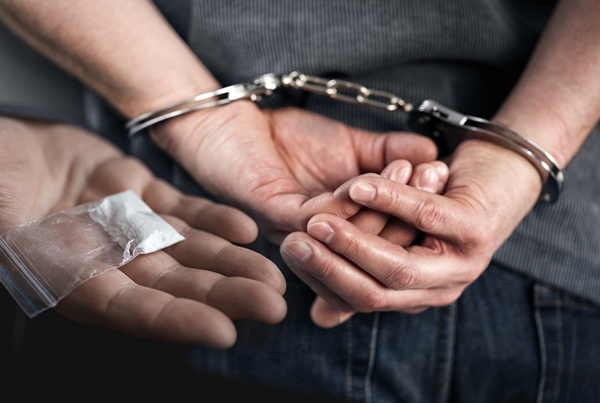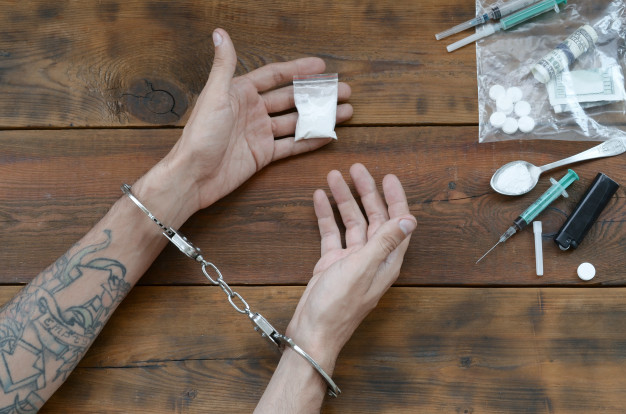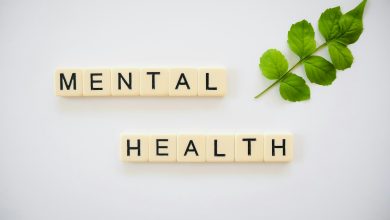What Does Possession Of A Controlled Substance Mean?

Controlled substances refer to illegal substances or prescription drugs which are regulated by the Controlled Substances Act (CSA) in the United States. The act categorizes all substances that are regulated and distributed into (5) distinct categories or schedules depending on how potentially dangerous they are. The schedule the drug is placed under depends on its medical use, its potential for abuse, and its safety or how easily people become dependent on it.
The abuse rate is a determinate factor in the scheduling of the drug; for example, Schedule I drugs have a high potential for abuse and the potential to create severe psychological and/or physical dependence. As the drug schedule changes– Schedule II, Schedule III, etc., so does the abuse potential– Schedule V drugs represent the least potential for abuse. A Listing of drugs and their schedule are located at Controlled Substance Act (CSA) Scheduling or CSA Scheduling by Alphabetical Order. These lists describe the basic or parent chemical and do not necessarily describe the salts, isomers, and salts of isomers, esters, ethers, and derivatives which may also be classified as controlled substances. These lists are intended as general references and are not comprehensive listings of all controlled substances.
Schedule 1
Schedule 1 drugs, substances, or chemicals are defined as drugs with no currently accepted medical use and a high potential for abuse. Some examples of Schedule I drugs are:
heroin, lysergic acid diethylamide (LSD), marijuana (cannabis), 3,4-methylenedioxymethamphetamine (ecstasy), methaqualone, and peyote.
Schedule 2
Schedule 2 drugs, substances, or chemicals are defined as drugs with a high potential for abuse, with use potentially leading to severe psychological or physical dependence. These drugs are also considered dangerous. Some examples of Schedule 2 drugs are:
Combination products with less than 15 milligrams of hydrocodone per dosage unit (Vicodin), cocaine, methamphetamine, methadone, hydromorphone (Dilaudid), meperidine (Demerol), oxycodone (OxyContin), fentanyl, Dexedrine, Adderall, and Ritalin.
Schedule 3
Schedule 3 drugs, substances, or chemicals are defined as drugs with a moderate to low potential for physical and psychological dependence. Schedule 3 drugs abuse potential is less than Schedule 2 and Schedule 1 drugs but more than Schedule 4. Some examples of Schedule 3 drugs are:
Products containing less than 90 milligrams of codeine per dosage unit (Tylenol with codeine), ketamine, anabolic steroids, testosterone.
Schedule 4
Schedule 4 drugs, substances, or chemicals are defined as drugs with a low potential for abuse and low risk of dependence. Some examples of Schedule 4 drugs are Xanax, Soma, Darvon, Darvocet, Valium, Ativan, Talwin, Ambien, Tramadol.
Schedule 5
Schedule 5 drugs, substances, or chemicals are defined as drugs with a lower potential for abuse than Schedule 4 and consist of preparations containing limited quantities of certain narcotics. Schedule V drugs are generally used for antidiarrheal, antitussive, and analgesic purposes. Some examples of Schedule 5 drugs are cough preparations with less than 200 milligrams of codeine or per 100 milliliters (Robitussin AC), Lomotil, Motofen, Lyrica, Parepectolin.

What Is Illegal Possession of a Controlled Substance?
Illegal possession of a controlled substance occurs whenever a person owns or otherwise possesses a drug or other controlled substance, without legal justification or permission. These charges usually apply when a person is found carrying marijuana, cocaine, methamphetamine, or other narcotics.
To convict someone of illegal possession of a controlled substance, the prosecutor must prove the defendant knowingly possessed the drug.
Knowing
The crime of possessing a controlled substance occurs whenever a person knowingly or intentionally has control of a drug. However, the prosecution doesn’t have to show that the accused knew that the drugs were controlled or that possession in this circumstance was illegal. Prosecutors only need to prove that the accused knew the drugs were present and intended to use or control them. Prosecutors can show this from the circumstances of the case, and they do not need to have actual statements from the accused or evidence that the accused actually used the drugs.
Possession
Possession means that a person has personal and physical control over an illegal substance. Courts have held that a person can have either actual or constructive possession of the drug. This means a person has it in a pocket or otherwise in personal custody (actual possession), or the person has control over and access to the drug, such as by having the drugs in a car’s glove compartment, a bag, or hidden in the home (constructive possession).
A defendant can be convicted of possessing a controlled substance if the prosecutor can show the accused had at least partial control over the drug. For example, two roommates could each be convicted of possession if they shared an apartment in which the police found marijuana. However, prosecutors must show more than that the two were merely roommates in the same home, for example, by proving that each defendant had control over the drugs or made incriminating statements about them.
Possession Versus Distribution or Sale
Depending on the circumstances, someone charged with possessing an illegal drug might instead end up facing charges of possession with intent to distribute—a much more serious charge than simple possession. Intent to distribute charges can be based on the number of drugs possessed—generally when the amount is too large for personal use. Other evidence tending to show intent to distribute drugs includes having large stashes of cash, packaging materials, or customer lists.
Drugs in Vehicles
Many possession cases arise from interactions between motorists and the police. In these situations, it’s common for the police to find drugs in the car and charge the driver with possession. The police might also be able to charge the driver with possession if passengers are found with drugs on their person or vice versa. However, even when the prosecutor can show that there were drugs in the car, the prosecutor must prove that the driver or passengers knew the drugs were there, or that they were near the driver or in plain view. Often, circumstantial evidence supplies this proof, which also shows that more than one person possessed the drugs.
Penalties
Drug possession charges are subject to an incredibly broad range of penalties, depending on the state in which the crime occurs or if federal charges are involved. The severity of the penalty depends upon a number of factors, such as the specific type of drug involved, the circumstances surrounding the possession, and the criminal history of the person possessing the drugs. Penalties for possession of Schedule I drugs are the most severe and Schedule V the least severe.
Fines. Many drug possession convictions result in fines. These can range from very minor fines of $100 or less to significant fines of $100,000 or more.
Incarceration. Jail or prison time is also possible when a person is convicted of possession of a controlled substance. Jail sentences range widely depending on the crime charged, the type of drugs involved, and the state’s laws, but can range from a few days or weeks to 10 years or more in prison.
Probation. Probation sentences are often given in drug possession cases and may be included with other punishments such as jail time, fines, or rehabilitation (such as drug treatment). A sentence of probation requires the convicted person to regularly check in with a probation officer and to comply with specific terms, such as not using any more drugs. If the offender fails to comply with the probation terms, a court can revoke probation and order the defendant to serve the jail or prison sentence.
Diversion. Diversion programs are similar to probation and often used in first-offender drug possession cases. With diversion, a prosecutor allows a drug offender to enter into a counseling and behavior modification program, which requires the offender to comply with specific terms for a period of time, often six months or more. Once the offender completes the diversion program, the prosecutor agrees to drop the drug charges. If the offender fails to comply with the diversion terms, the prosecutor will pursue the possession charges.
Rehabilitation. Many states allow courts to sentence a drug offender to a period of rehabilitation or drug treatment program instead of a jail sentence. Attending rehabilitation is also sometimes required in probation sentences.
What Can I Expect for First Time Offense for Possession of a Controlled Substance?
In some cases, a first-time offense for possession of a controlled substance can result in alternative sentencing options for the defendant. This is especially true for more minor crimes and less serious misdemeanors. For instance, the person might be allowed to be placed under house arrest or perform community service instead of going to jail.
Again, these all depend on the exact nature of the charges and state laws. A skilled criminal defense attorney can be helpful in obtaining alternative sentencing for a first-time offense.
On the other hand, repeat offenders might face more serious punishments than normal if the court determines that they are habitual offenders or if there is a potential that they will continue repeating the crime in the future.





